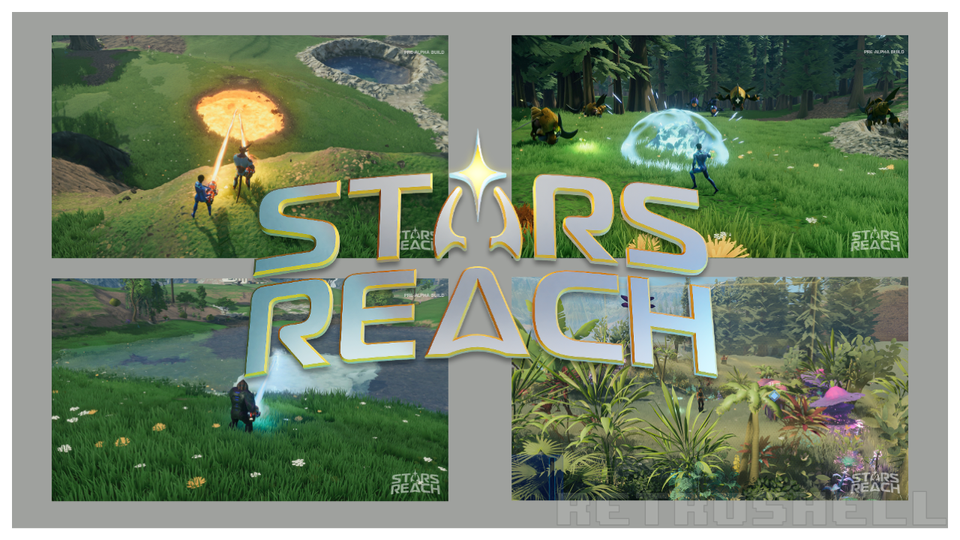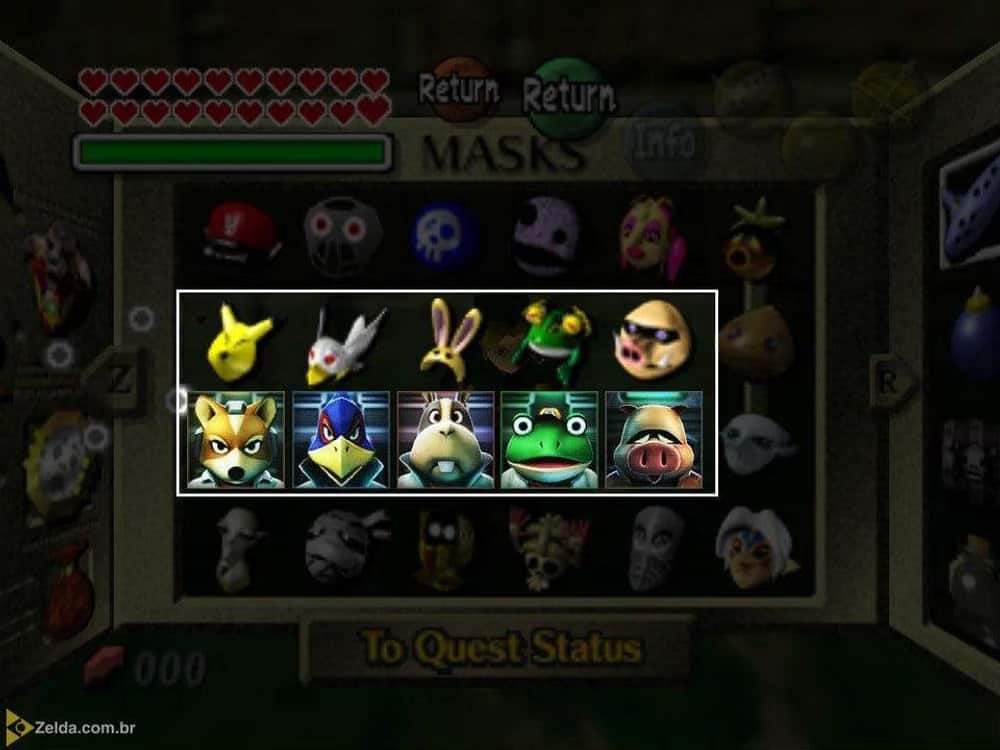[Exclusive] Stars Reach: A Deep Dive into the Spiritual Successor to Star Wars Galaxies
![[Exclusive] Stars Reach: A Deep Dive into the Spiritual Successor to Star Wars Galaxies](/content/images/size/w1200/2025/03/StarsReach.png)
I am a huge fan of Star Wars Galaxies, for me it was the greatest game ever made - the freedom to make my mark on the universe, wrapped up in the look and feel of one of my favourite films of all time made it a potent combination. It was my first foray into MMO's and it reeled me in completely. Then came World of Warcraft (I was there on the tragic day one having take an day off work to be amongst the first online, only for the launch day to be plagued with capacity problems), and that was fun, but it was just too - linear? For me it was a pale comparison to the rich depth that SWG offered in terms of, well, everything. I did not want a level based system, I wanted to try multiple professions, I wanted to be a resource trader, a bounty hunter, and maybe, one day, a Jedi.
Sadly the popularity of the paint by numbers approach that Wow did so well was seen as a shift in the world of MMO's, away from the sandbox, towards the hand holding of levelling and simple crafting. It was seen as more accessible for the masses and the masses loved this and paid their money and made their choice.
Sadly, Sony Online Entertainment (SoE) also saw the shift and decided to abandon their sandbox principals in order to try and emulate the success of WoW. This meant bringing in "New Game Enhancements" (aka NGE) in November 2005, which for me, and a number of other players was the beginning of the end for the SWG I knew and loved. Now it was a FPS with a level based system, and with that, I left the Galaxy.
Over the years, I still have not lost my love for this game, I have played SWG Emu a few times, taking the same joy from the pre-NGE experience as I built my small empire including my house and my resources business, but the level of population on the servers just was not the same to keep me hooked.
Ever since then I have been homeless in the world of MMO's, I have tried dozens, but none have really done more than scratch my Galaxies sized itch. They were mostly all linear by design, or lacked the depth I wanted in crafting. Then I heard about a game called "Stars Reach" from Raph Koster - who was the creative director for SWG. It was heralded as the spiritual successor to SWG. I have heard this before, but I was interested enough to dig a little deeper.
I have been following the project for some time, and I thought it would be great to get some more details on what Stars Reach might offer to SWG veterans in exile - so I reached out to Raph who kindly agreed to answer some questions on the game.
In our exclusive interview with RetroShell, Koster detailed how Stars Reach builds upon and surpasses his previous innovations, particularly around player freedom, crafting complexity, and economic depth. Here, I delve deeper into what makes Stars Reach uniquely compelling, especially for those who have long awaited an MMO that captures the magic and depth of SWG.
Q: What is the core philosophy behind Stars Reach, especially in relation to your previous games like Star Wars Galaxies?
Raph Koster: “The core philosophy remains the same: provide players with an immersive experience where they truly feel they’re stepping into another world. This has always been central for me, stretching back to the earliest days of text-based MUDs, where the appeal was the sensation of inhabiting a completely different identity in a fully realized alternate environment. With Ultima Online, we explicitly aimed to create a virtual world that felt genuinely alive, and with Star Wars Galaxies, the ambition was even clearer: we sought to let players live and breathe the Star Wars universe, hence the memorable tagline: ‘The greatest saga ever told: yours.’ Players weren’t just spectators; they were active participants shaping their own narratives.
With Stars Reach, we’re consciously carrying forward and expanding upon that tradition of immersive, player-driven storytelling. However, we’re pushing the boundaries of immersion much further than we’ve managed before. Instead of players existing in a largely static environment, we’re integrating deep environmental simulations that allow players to meaningfully impact the very fabric of the worlds they inhabit. Players can reshape terrain, build towns, mine resources, and even influence the ecosystems around them. These aren’t temporary or cosmetic changes—they’re permanent, dynamic shifts that affect not only individual players but entire communities.
Moreover, we’re combining this world-building depth with accessibility inspired by successful console games like The Legend of Zelda: Breath of the Wild, ensuring that the immersion we strive for doesn’t come at the cost of overwhelming complexity. Players will encounter a seamless transition from simple, intuitive mechanics at the start to deeper layers of interaction as they progress, ensuring that immersion and depth coexist harmoniously. Thus, Stars Reach doesn’t merely replicate past successes; it expands upon them, offering unprecedented levels of interactivity and freedom to genuinely live within the worlds players explore.”

Q: How does Stars Reach enhance player freedom and crafting systems compared to your previous titles?
Raph Koster: “Player freedom and crafting have always been central to my games, but with Stars Reach we’re significantly enhancing them by deeply integrating advanced environmental simulation. In Star Wars Galaxies, the environment was largely static—resources were abundant, but the world itself didn’t change significantly through player actions. Players surveyed for resources, but those resources simply appeared and disappeared on fixed schedules, without impacting the landscape itself.
In contrast, Stars Reach fundamentally transforms this dynamic. Players can physically reshape the worlds they inhabit by digging mines, constructing expansive quarries, and actively terraforming terrain. These actions don’t just create visual changes; they leave permanent, tangible marks on the environment. If a player mines extensively in one area, they may permanently alter the geological structure of that location. Resources extracted aren’t simply replenished—they can become genuinely scarce or even exhausted, driving players to explore and discover entirely new worlds via worm gates, adding a whole new strategic dimension to resource management and exploration.
Moreover, the crafting system maintains the complex depth players cherished in SWG—resources still vary widely in quality and type, impacting crafted item attributes—but now the environmental dynamics add an extra strategic layer. Crafting isn’t merely about combining components; it’s about responsibly managing finite resources and adapting to evolving planetary conditions. Players must think carefully about their environmental impact and long-term resource availability, bringing new realism and strategic depth to the crafting experience.
Overall, this integration of detailed environmental simulation with rich, impactful crafting ensures players have unparalleled freedom, creating meaningful, lasting changes in their worlds—something we’ve never achieved to this extent before.”

Q: How does Stars Reach approach accessibility, catering both to new players and veteran MMO enthusiasts?
Raph Koster: “Our goal is accessibility without sacrificing depth. In the early days of MMORPGs, grouping was straightforward—players typed simple commands to join parties and began adventuring together immediately. However, as the genre matured, interfaces became increasingly complex, introducing elaborate loot-sharing systems, rigid class roles, and extensive acronyms and mechanics that newcomers found intimidating.
In Stars Reach, we’ve developed a system we refer to as ‘soft grouping,’ inspired by approachable games like Realm of the Mad God. This mechanic allows players to naturally form groups simply by being near one another during combat or exploration. Without having to navigate complicated interfaces or explicit invitations, players automatically share experience points and combat bonuses, making grouping instinctive and seamless for new players.
As players become more experienced, the game gradually introduces advanced group management options through skill lines and progression systems. This allows veteran players to unlock traditional, structured grouping mechanisms, including formal parties, tactical formations, leadership skills, and strategic perks.
We’ve consciously designed the progression system to feel organic: early gameplay is intuitive and approachable, catering to casual players or those new to MMORPGs. Yet, as players invest more time and effort, they discover deeper complexity that enhances gameplay, offering seasoned MMO enthusiasts the depth they crave.
I often compare this design to how Magic: The Gathering works. Players can learn and acquire countless cards, but they’re limited to building and using a certain deck size during any given match. Similarly, in Stars Reach, players can learn numerous skills, but only equip and utilise a specific set each time they venture into the world. This approach maintains strategic depth, encouraging thoughtful decisions without overwhelming new players with excessive complexity at the outset.
Ultimately, our philosophy is simple: newcomers should never feel discouraged by information overload, while veterans always find new layers of depth to explore."

Q: Could you elaborate further on how resource extraction and terraforming works in Stars Reach, and its impact on player ownership compared to SWG?
Raph Koster: “One of the biggest leaps we’ve made with Stars Reach is giving players the ability to directly reshape entire planets through resource extraction and terraforming. In Star Wars Galaxies, resource extraction, though detailed, was fundamentally abstract—you placed resource extractors, and resources appeared or disappeared on predetermined schedules. The environment itself never physically changed; there were no lasting marks left by player actions.
In contrast, Stars Reach features an extensive and realistic terrain modification system. Players physically mine, excavate, build quarries, and terraform the landscape itself. When resources are extracted, the environment visibly and permanently reflects these changes—mines leave real pits, forests can be cleared, and even waterways can be altered. These physical modifications have profound ecological impacts: resources become depleted, native species are affected, and the overall planetary environment evolves dynamically based on sustained player interaction.
Regarding player ownership, Stars Reach starts with planets entirely unclaimed—a completely open frontier for exploration, settlement, and modification. Players can freely stake out land to establish homesteads, building highly customized housing plots far exceeding the complexity and personalization that was possible in SWG. In Stars Reach, you’re not just erecting simple structures; you’re creating entire personalized environments that can be tailored through modular construction, detailed terraforming, and extensive decoration options, giving players unprecedented creative freedom.
Collective player actions also deeply shape planetary governance. As settlements expand, players naturally form communities capable of establishing formal governments for entire planets. These player-run governments control vital aspects of life, including setting rules for resource extraction, establishing zoning laws to protect or manage the land, determining PvP regulations, and even deciding taxation policies. Essentially, we’ve taken the beloved player-city dynamics from Star Wars Galaxies and scaled them up to planetary levels. Players not only own and build individual homes but collectively influence how planets evolve and are managed, creating an engaging political and social ecosystem that continually adapts based on player-driven decisions.”

Q: How does Stars Reach approach crafting and how does it compare in depth to Star Wars Galaxies?
Raph Koster: “Crafting in Star Wars Galaxies set an incredibly high standard due to its unprecedented depth and complexity. Players loved that the quality of crafted items depended heavily on detailed, variable resource attributes—this encouraged exploration, trading, and strategic thinking. In Stars Reach, we’ve retained and even expanded upon this complexity, but with a significant enhancement: the interaction with a dynamic and ever-changing environment.
In SWG, resources appeared periodically with varying qualities but were fundamentally static—players simply placed harvesters, waited, and collected materials. However, in Stars Reach, resources are part of a fully simulated environment. Each planet holds a finite, exhaustible pool of resources, each with unique attributes affecting crafted items just as in SWG. But here, extracting those resources genuinely changes the world around you. Players physically mine or excavate resources, permanently altering terrain, potentially exhausting local deposits or even entire planetary supplies.
Because planets are dynamic and exhaustible, players must continually adapt, strategize, and explore new worlds to maintain their crafting operations. Resource scarcity becomes a real factor in gameplay, driving exploration, diplomacy, trade, and even conflict. Players may find themselves actively searching for new planets via worm gates, discovering fresh resources with distinct qualities and attributes essential for advanced crafting.
This added environmental realism means crafting isn’t only about managing inventory or item attributes. Players now must carefully consider sustainability, environmental impacts, and strategic decisions about resource management and planetary colonization. It creates a richer, deeper crafting ecosystem where every action has meaningful consequences, both individually and at the community level.
Ultimately, crafting in Stars Reach matches—and in many ways exceeds—the beloved depth of SWG’s system, by integrating dynamic, player-influenced environmental simulation, providing an immersive, strategic, and continually evolving crafting experience.”

Q: How are you ensuring a balanced player-driven economy in Stars Reach, given the inherent challenges observed in previous games like SWG?
Raph Koster: “Player-driven economies are inherently complex and challenging to balance. Traditionally, MMORPGs either feature centrally controlled economies, which often lead to problems like inflation or market stagnation, or fully player-driven economies, which frequently result in wealth becoming heavily concentrated among a small number of players. We’ve learned these lessons firsthand from our experiences with both Ultima Online and Star Wars Galaxies, where managing economic stability was an ongoing challenge.
With Stars Reach, our objective is to strike a careful balance. We’re pursuing a genuinely player-driven economy but managing it indirectly through meticulously designed systems of faucets and sinks. Faucets represent the inflows of currency and resources into the game world—how new items, resources, or money enter circulation. Sinks are the mechanisms that remove resources and currency from the economy, such as item durability, taxation, upkeep costs, or resource exhaustion. By carefully balancing these faucets and sinks, we ensure a stable economy where neither inflation nor stagnation becomes overwhelming.
To achieve this balance, we closely monitor the flow of resources and currency, constantly adjusting the rates at which items and money enter or leave the game. Players who accumulate substantial wealth will naturally encounter increasing logistical and operational expenses. Maintaining large businesses, expansive infrastructure, or planetary-scale operations doesn’t remain static in terms of cost—it grows exponentially. This ensures that players who achieve significant economic influence must continually reinvest their wealth back into the economy to sustain their positions.
To illustrate this clearly, think about it in terms of real-world companies. As businesses grow, they inevitably become more complex, incurring higher operational risks and expenses. A large, powerful corporation cannot expand indefinitely without eventually facing significant challenges—supply-chain issues, management complexity, operational overhead—that threaten its stability. Similarly, in Stars Reach, a single dominant player or group won’t remain on top indefinitely without facing escalating operational costs and strategic vulnerabilities.
This approach prevents wealth from being excessively concentrated among a few players and keeps the economy vibrant, dynamic, and accessible for all participants. It creates an environment where both new and veteran players can thrive economically, maintaining a healthy balance between opportunity and challenge.”

Q: What are your goals and experiences with the Kickstarter campaign for Stars Reach?
Raph Koster: “Kickstarter has been both validating and exhausting. Although we’ve been privately funded, raising nearly $40 million over five years through venture capital and private investment, we felt it was important to publicly demonstrate the enthusiasm and demand for a game like Stars Reach. Our Kickstarter wasn’t merely about raising additional funds—it was equally about engaging directly with the gaming community, confirming that the appetite for this kind of deep, immersive sandbox MMO is very real.
Within just days of launching the campaign, we passed the half-million-dollar mark, which was incredibly affirming. This allowed us to unlock exciting stretch goals, including new playable species and enhanced object customization options—features that resonate strongly with the community. The quick success of the campaign clearly showed that there’s an audience actively craving an experience reminiscent of Star Wars Galaxies but enhanced with modern innovation.
However, our Kickstarter experience goes deeper than just validating demand. We’re using it strategically to expand our visibility. Despite the dedicated following Star Wars Galaxies had, many former players remain unaware that Stars Reachexists as a spiritual successor. One of our key goals with this campaign has been to reach out to these veterans and remind them that the immersive, sandbox experience they’ve been missing is coming back—better, deeper, and more interactive than ever before.
Ultimately, Kickstarter is about more than fundraising. It’s a powerful way for us to connect directly with our community, confirm that our vision aligns with what players truly want, and show the broader industry that there’s a substantial market eager for MMOs that genuinely prioritize player creativity, freedom, and depth. We’re humbled by the enthusiasm we’ve seen and committed to delivering an experience that lives up to the community’s high expectations.”
Q: Finally, what would success look like for Stars Reach at the conclusion of this Kickstarter?
Raph Koster: “Success for us isn’t merely financial; we’ve already reached some significant milestones through private funding and community engagement. Instead, true success at the conclusion of our Kickstarter goes deeper—it’s fundamentally about raising widespread awareness, building community trust, and clearly demonstrating to players, particularly longtime fans who have patiently waited for a worthy successor to Star Wars Galaxies, that we’ve genuinely created something special and deserving of their passion.
Kickstarter, for us, serves as a public validation of our vision and our commitment to the player community. It’s an opportunity to bring players onboard, not simply as supporters but as genuine partners invested in the game’s development journey. Importantly, we’re using this moment to establish trust by showcasing transparency in our development process and communicating clearly about what we’re building, what’s already playable, and what players can realistically expect.
We’re deeply mindful that Kickstarter has become something of a cautionary tale in gaming—a graveyard littered with ambitious projects that promised much but delivered little. We’re committed to proving we’re different. Unlike many projects that use Kickstarter as their starting point, we’re treating this campaign as a ‘kick-finisher.’ Our alpha testing has already been active for months, with thousands of players extensively testing, providing feedback, and helping shape the experience directly.
Our commitment to transparency means players can already see tangible proof of progress—they’re not just backing an idea, they’re joining a game that’s actively playable and demonstrably evolving. For us, true success means players leaving our Kickstarter confident in our ability to deliver, excited about what’s ahead, and reassured that the vision we’ve promised is achievable, authentic, and already underway.
Ultimately, success at the conclusion of this Kickstarter means fostering a passionate, engaged community that trusts us, understands our vision, and eagerly participates in shaping Stars Reach into the immersive, deeply interactive, and player-driven MMO we’ve long envisioned.”
So there you have it, I hope that a lot of the key questions you might have had about this exciting project have been answered, and I will be testing the game in its's Alpha state in the coming weeks.
For fans who miss the immersive sandbox worlds of earlier MMORPGs, Stars Reach promises not only nostalgia but a leap forward, delivering unparalleled depth, freedom, and authenticity. I have already supported the project on Kickstarter (before the interview) as I have been searching for a replacement for SWG for almost 20 years, and I am very optimistic that we might have it in Stars Reach. As I write, there are over 3,500 backers, smashing its goal of $200k with over $550k being pledged so far with over half a month remaining.




